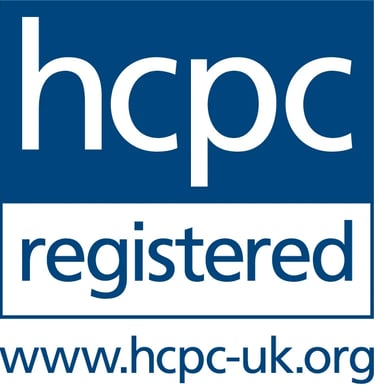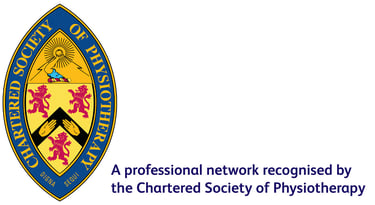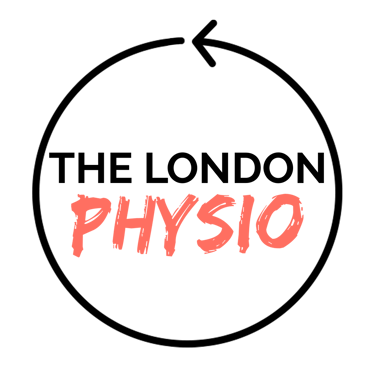Avoid Hip Dislocation: 3 Dangerous Moves to Avoid After Hip Replacement
Joy Ogude
2/18/20255 min read
Hip replacement surgery is a life-changing procedure that can offer relief from pain and help you regain mobility. However, it's important to remember that the recovery process requires special care and precautions to avoid complications, such as hip dislocation.
In this blog, we’ll discuss three dangerous moves that should be avoided after hip replacement surgery, as well as how virtual physiotherapy can help ensure you are recovering safely and effectively.


Watch video: Three dangerous moves to avoid after hip replacement

3 Dangerous Moves to Avoid After Hip Replacement
After hip replacement surgery, there are specific movements that can place your new hip joint at risk of dislocation. Let’s take a look at the three most common dangerous moves:
1. Bending the Hip Past 90 Degrees
One of the most important precautions after hip replacement surgery is avoiding bending the hip past 90 degrees. This movement places excessive stress on the hip joint, increasing the risk of dislocation.
What to do instead:
When sitting or standing, make sure your hip remains at or above a 90-degree angle. This can be achieved by using pillows or raised seats to keep the hip at a safe angle, particularly when sitting on low chairs, couches, or toilets. The video explains further how to bend down without putting the hip at risk.
2. Crossing the Legs Past Midline
Crossing your legs is another movement that should be avoided after hip replacement surgery. It can force the hip into an unnatural position, increasing the risk of the new hip joint dislocating.
What to do instead:
When sitting, make sure both feet remain flat on the floor. If you find it difficult to sit with your legs uncrossed, try using a pillow or cushion between your knees to keep them apart. The video explains other real life examples where you may not realise you're putting yourself at risk.
3. Twisting or Pivoting on the Affected Hip
Twisting or pivoting on the affected leg can cause strain on the new hip joint, potentially leading to dislocation. This is especially risky during activities like getting in and out of the car or while performing household chores.
What to do instead:
To minimise the risk, always move your body as a unit and avoid rotating or twisting at the hip. When getting in and out of a car, swivel your whole body around instead of pivoting on your hip. For other activities, such as getting up from a chair, use your arms to help you push up instead of twisting. The video explains more in detail.
Due to the way a total hip replacement surgery is performed, both the ball and socket elements of the hip are replaced. However, in order to get through to the joint, the surgeons have to cut through many layers of soft tissue such as skin, muscles, ligaments, fascia and so on. These structures normally serve as reinforcement to the hip joint.
Hence, during the early healing process, as you can imagine, the hip isn't as stable. By avoiding these three dangerous movements, you can help prevent hip dislocation and ensure your recovery goes as smoothly as possible. Following your physiotherapist and surgeon's advice by adhering to these basic precautions will set you on the path to a stronger, more stable hip joint.
Why These Precautions Matter


Our physiotherapists will provide you with tailored advice, personalised exercise programs, and continuous monitoring to ensure you are following the right precautions for a safe and successful recovery.
Whether you choose virtual or home visits, we will make sure you get clear instructions and videos of all exercises through our app.
As your pocket cheerleaders, we provide ongoing physiotherapy support in between sessions, where needed!


How The London Physio Can Help
Why Choose The London Physio?
Whether you want a one-off second opinion or you want us to take over your rehab completely, The London Physio is here to meet you exactly where you want to be met!
2. We Can See You Virtually
Virtual sessions are convenient and flexible. We see you when YOU want to be seen!


1. Self Refer. No waiting lists or waiting rooms
No referral needed! Skip the long waiting lists! And see, they're all crossing their legs! OMG.
Prefer to be seen at your home, or nursing home? We got you!
3. We Can See You At Home




Meet hip surgeon, Miss Samantha Tross - Consultant Orthopaedic and Trauma Surgeon based in London.
Miss Tross advises that an x-ray is done immediately after a patient's surgery. Hence there is usually no need for a second x-ray during their follow up, review appointment, unless she suspects complications such as a fracture, or has a concern about subsidence with uncemented femoral prosthesis. Otherwise, there will be no further x-ray for 5-7 years. During your review however, she ensures there are other checks such as wound, leg length, muscle strength and range of movement.
Having worked with Miss Tross, we highly recommend her exceptional services. Learn more about Miss Tross here.


4. We Have Great Relationships With Top Surgeons
At The London Physio, we only work closely with the best surgeons in the country. We aim to build intentional, professional relationships with our wider network of colleagues, to ensure your needs are met.
Need help with your physiotherapy rehab?
Let us help take all the stress off your hands. We’re here to support you on your journey to recovery. As well as ensuring you're on the right track with the hip precautions above, we will also ensure you have a bespoke physiotherapy program, complete videos, via exercise app with videos directly to your phone.
📅 Book A Virtual Consultation Today To Discuss Your Needs
Want a Home Visit Instead?
We now do home visits in London, Shropshire and surrounding areas! Leave your details in the form and we will get back to you within 48 hours.
Contacts & useful info
admin@thelondonphysio.co.uk
Subscribe to our newsletter
+44 (0)33 0133 4502






Careers
